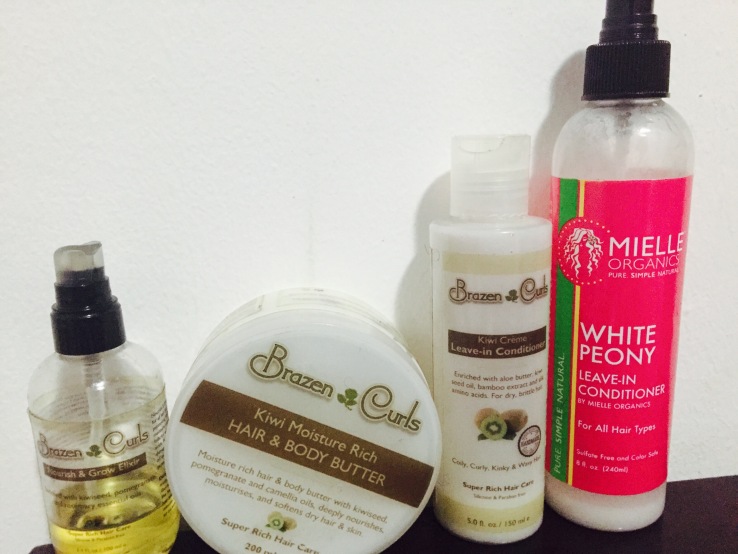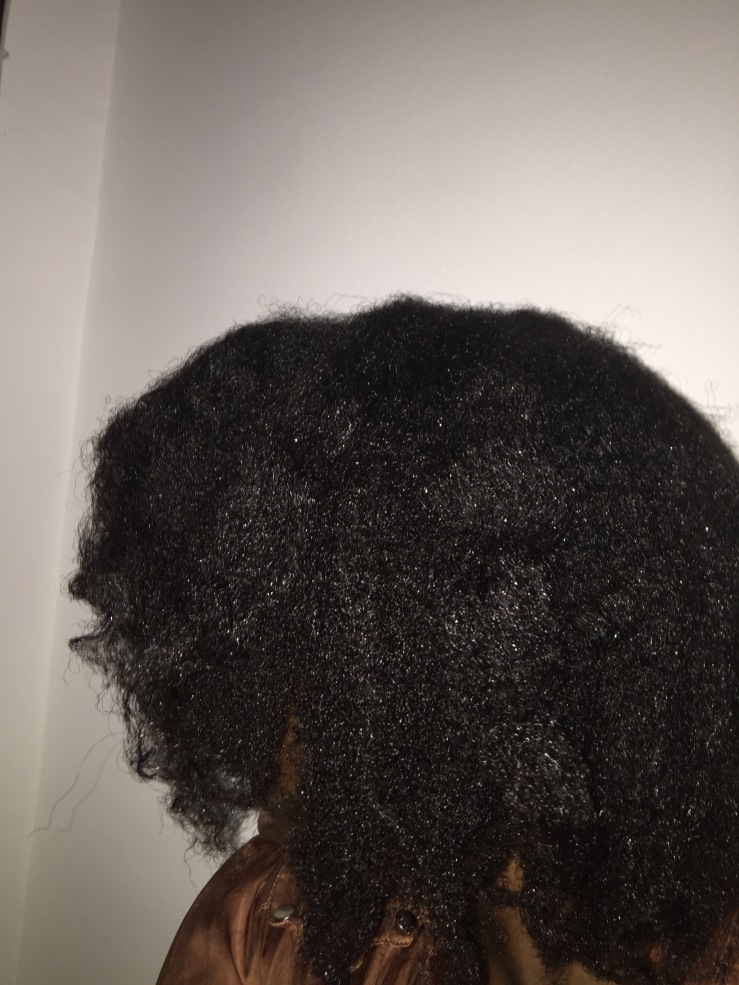
Hey hey, this time I didn’t actually stay away for too long. So the title looks basic right? Its something you wouldn’t think needs addressing……but it does!
Deep conditioning is a very important practice; it can improve your hair or damage it over time. It’s the process of fortifying your hair with either protein or moisture to achieve that protein moisture balance your hair needs to flourish. It important to note that deep conditioners are best as a preventive measure, they have no magical powers to repair already damaged split ends or severely heat damaged hair, the only way to treat dead hair is to cut it of!! Most of the time when serious damage has occurred one cannot retroactively remedy the problem (e.g. when there is excessive heat damage).
When to deep condition?
Generally, a regular moisturizing rinse conditioner should do the trick, and deep conditioning should not occur more than once or twice a month. However, these are the tell tale signs that we need to deep condition:
1. Breaking hair
2. Dull looking hair
3. Highly porous hair
4. Split ends or mid shaft splits (holes in your hair shaft)
5. Loss of elasticity
6. Dry and brittle hair
7. Lots of tangling
Why deep condition?
A good deep conditioner should help your hair withstand wear and tear from styling, cleansing, sun/heat etc. Conditioning should also improve the health of your hair and make it healthier. Conditioning should help you achieve certain goals:
1. Increased softness and bounce
2. Increased hair flexibility and strength
3. Ease of combing
4. Reduction in hair porosity
5. Better shine
6. Minimize frizz and fly away
7. Reduce breakage
8. Improve manageability
How to spot a good deep conditioner?
Just because a deep conditioner is expensive doesn’t mean it would be great (usually a decent correlation though! Lol) and just because a deep conditioner is cheap doesn’t mean it would be crap (also an amazing positive correlation there!! Lol). So you have to know what to look for in the ingredient list! ……. PLEASE CHECK THE INGREDIENTS OF THE PRODUCTS YOU BUY!!! Knowing the right type of ingredients to look for at first glance will really help you chose a deep conditioner that it right for you;
Firstly, search for ingredients that attach onto the hair, this is because conditioning agents are meant to adsorb into the hair, this means that the ingredients have to attach to the hair. Ingredients that attach to the hair or bind to the surface of the hair are responsible for softness, manageability, reduction of flyaway hairs, detangling and smoothing of the cuticle. Hair carries a negative charge, its important to look out for surfactants with a positive charge (conditioning surfactants) as those will be attracted to the negative charge of the hair and bind to the surface of the hair. Examples of such are Behentrimonium Methosulfate or BTMS, Behentrimonium Chloride and Centrimonium chloride. Also look for emollients like cetyl and cetearyl alcohol, murumuru butter, coconut oil, olive oil, aloe vera (juice, gel, oil or butter), butylene glycol. Also look for cationic polymers like guar gum, some silicones also attach to the hair and convey benefits.
However, silicones create buildup on the scalp, causing irritation and blocking the hair follicles, thus stunting or slowing growth. Although, it is important to note the type of silicone (although I try and avoid them all together) contributes to the extent of build up. Dimethicone is one of the silicones with high molecular weight, its heavy and very hard to wash of since its not water soluble. On the other hand, Cyclopentasiloxane is water soluble, and very volatile, thus it doesn’t accumulate. At this point, I would like to recommend a natural alternative to silicones like broccoli seed oil, to avoid other negative effects of silicones. You can usually detect silicones as they have names ending in –cone or –siloxane e.g. dimethicone, cyclomethicone, cyclopentasiloxane etc.
Secondly, search for ingredients that penetrate the hair, especially in your protein conditioners. While it is great to splatter egg on your hair, in the name of protein conditioning, you might not be getting the best benefits. Protein conditioners have ingredients that strengthen, and reinforce the hair structure. They have to be full of hydrolyzed proteins to work, meaning that the proteins have to be small enough to penetrate the hair shaft. Protein treatments work by filling the gaps present on your hair strand and forms a temporary bond. Hydrolyzed proteins are not the right size and simply cannot do this, so your eggs are probably better for your hair when you consume them.
Thirdly, check the consistency of the deep conditioner, creamy conditioners are the very best, they are usually excellent in detangling. However, please not DO NOT DETANGLE when you have a protein conditioner in your hair, medium to heavy protein conditioners make the hair hard and stiff, its never a good idea to comb the hair while a protein conditioner is in your hair.
All types of conditioner must contain water, it should be the first or at the very least second ingredient, as water is the ultimate moisturizer for the hair.
Protein or Moisturizing conditioner?
Protein conditioners are necessary when the hair is breaking due to over moisturization, limp, fine, relaxed, damaged etc. While moisturizing conditioners should be used when hair is very dry, hard, breaking due to dryness etc. It is important to understand that hair need s a protein and moisture balance to grow/retain length. Too much protein makes the hair overly dry, stiff and hard, while too much moisture makes the hair limp, and weak.
In part 2, we would look at the technique for conditioning and how to get the most out of your deep conditioning session.

 WHY GREEN TEA HAIR RINSES WORK
WHY GREEN TEA HAIR RINSES WORK




























